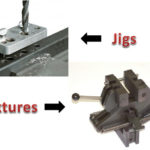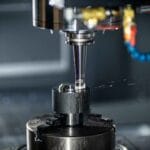Are you curious to know what is heat treatment process? What are the types of it? Well, in this article you will get answers of all these questions. So, let’s get started. Heat treatment process is a technique in which metals in the solid state are subjected to heating and cooling processes. The basic purpose of heat treatment process is to change the physical properties of the metal. The physical properties like ductility, malleability, hardness can be altered with this heat treatment process. These physical and mechanical properties of the metal are changed in such a way that it becomes more useful and can be used in versatile applications. 
Types of Heat Treatment Process
Following are the types of the heat treatment:
1. Normalizing
Normalizing is one of the heat treatment processes which is used in case of ferrous metals only. Many internal stresses are formed in the metal when it is subjected to various processes like welding, machining and heat treating. And we use this process to remove such internal stresses. Normalizing gives rise to the bainite, martensite, and pearlite. Normalizing is different from annealing and it requires less cost than annealing. It is the perfect process for getting the harder steel.
2. Aging
Aging is often referred to as precipitation hardening or age hardening. In this method, various processes like solution heat treating and precipitation heat treating are involved. Maraging steel, Waspaloy, Uranium alloy are some of the examples of the aging.
3. Annealing
The basic purpose of annealing is to soften different materials. In the annealing process, we heat the metal first up to its critical temperature and then, allow it to cool down. We actually do annealing to increase the electrical conductivity of the metal. Sometimes the metal is heated in such a way that recrystallization may take place. Annealing involves the slow cooling of the given metal. The application of the annealing is in cold working. There are various types of the annealing methods like recrystallization annealing, partial annealing, and final annealing.
Also Read:
- What is Slotter Machine?
- What is Induction Heating?
- Blast Furnace: Introduction, Definition, Construction, Working Principle, Applications & Advantages
4. Tempering
In tempering process, metal is heated below its critical temperature. This temperature range is 205ºC to 595 ºC. In tempering process, there are two techniques like Austempering and Martempering. In this process, the term tempering colors play a crucial role. These tempering colors are used to determine the quality of the steel.
(i) Austempering
Austempering is the heat treatment process which is used in case of most of the ferrous alloys especially steel and other alloys. By this process, we obtain bainite, ausferrite, and acicular ferrite. The main purpose of using Austempering is to enhance various mechanical properties and to decrease various irregularities inside the metal.
(ii) Martempering:
Martempering is also famous as interrupted or stepped quenching. In martempering, steel is heated above its critical temperature. In martempering, we have to get the steel which is nothing but the complete austenite. This process is also called as marquenching.
5. Decarburization
Decarburization is the process in which a metal is heated below 1740º F and then, we put this metal in the surrounding of the solids, liquids, and gases that contain the high amount of the carbon. The decarburization results in hardening the surfaces of the metal and thus increases its strength.
6. Stress Relieving:
As the name suggests, stress relieving is the process of removing internal stresses of the metal more efficiently and quickly. In stress relieving, metal is heated below its critical temperature and then, metal is allowed to cool down. This process is used for boilers, air tanks, and different pressure vessels.
7. Quenching
Quenching is also called as hardening. In quenching process, metal is heated above its critical temperature and then allow to cool down. Here, the metal is cooled down in a quick time. Sometimes, there are certain kinds of steels which get destructed by such quick cooling. Some of these steels are AISI 4140, AISI 1040, ISO 1.2767, XK1320. Such steels are hardened in brine, oil, etc. The downside of using quenching is that the metals become brittle. But no need to worry because further, we use processes like tempering to handle these issues. Quenching is one of the most prominent heat treatment processes.
8. Case Hardening
Case hardening is also famous as surface hardening. There are a lot of applications of the case hardening and we use case hardening to produce different firing pins, drilling screws as well as in engine camshafts.
9. Cryogenic Treatment
In cryogenic treatment, we heat the metal to cryogenic temperatures. The cryogenic temperature is the temperature which is below -190º C. We give cryogenic treatment to the metals to remove various stresses inside them and to increase their resistance. It is the most beneficial process as it improves the thermal and electrical properties of the metal. Again, there are various processes involved in it like cryogenic machining, cryogenic hardening, Cryogenic rolling, Cryogenic deflashing, Cryogenic deburring. In this article, we come across all types of heat treatment processes. If you get some worthy knowledge from this article then, don’t forget to share it maximum.








